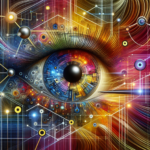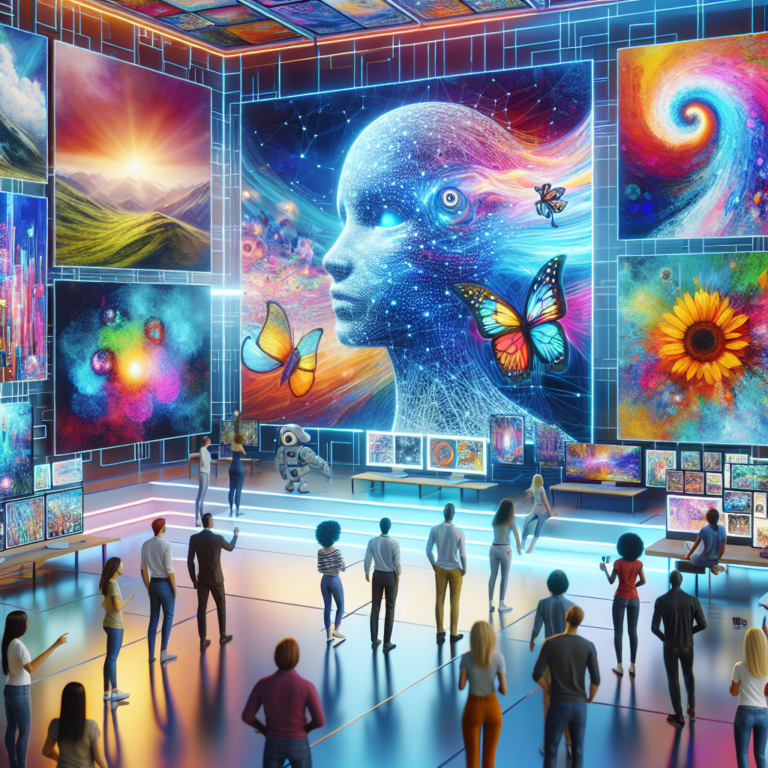Revolutionizing Visual Creativity: OpenAI’s GPT-4o Native Image Generation
In a groundbreaking move, OpenAI has unveiled GPT-4o, featuring a revolutionary OpenAI native image generation capability. This innovation marks a significant leap in the field of AI-driven visual creativity, offering unprecedented precision, context awareness, and practical utility. By integrating OpenAI’s native image generation seamlessly into its systems, GPT-4o enables users to create images with detailed text integration and complex prompts, setting new standards for text-to-image synthesis.
Overview of GPT-4o Image Generation
GPT-4o is part of OpenAI’s broader strategy to integrate multimodal capabilities into its AI systems. Unlike previous models like DALL-E, which used diffusion transformers to reconstruct images from text prompts, GPT-4o is trained as a unified, autoregressive transformer that understands and generates both text and images seamlessly. This approach allows GPT-4o to leverage its vast knowledge base and chat history to create more accurate and contextually relevant images.
Key Capabilities
Here are some of the key capabilities of GPT-4o’s image generation feature:
- Text Integration: Accurately renders text within images, making it ideal for creating signs, menus, and infographics.
- Complex Prompt Handling: Supports prompts with up to 20 different objects, ensuring high fidelity even in detailed compositions.
- Consistency and Refinement: Maintains visual consistency across multiple image generations through natural conversation, allowing users to refine images interactively.
- Style Adaptation: Generates images in various styles, from photorealism to stylized illustrations.
Technical and Functional Enhancements
GPT-4o’s image generation is a culmination of OpenAI’s efforts to incorporate multimodal capabilities into their models. These enhancements include:
- Training Data and Approach: The model is trained on a joint distribution of online images and text, enhancing its understanding of how images relate to language and other images.
- Native Integration with ChatGPT: Unlike DALL-E, which relies on external models for image generation, GPT-4o integrates its image generation natively with ChatGPT.
- Complexity and Precision: Can handle complex prompts with high precision and supports up to 20 distinct objects in a single scene.
- Versatility and Customization: Allows users to specify details like aspect ratios and color schemes (using hex codes).
Limitations and Future Developments
Despite its impressive capabilities, GPT-4o’s image generation feature faces some limitations:
- Cropping Issues: May crop long images too tightly.
- Non-Latin Text Rendering: Struggles with rendering non-Latin characters, leading to errors.
- Information Density: Difficulties with detailed or small-font text losing clarity.
- Editing Precision: Modifying specific parts of an image can inadvertently affect other elements.
OpenAI is actively working on addressing these limitations through future model updates and refinements.
Access and Availability
GPT-4o’s image generation feature is available to all ChatGPT users, including those on the Free, Plus, Pro, and Team plans. Enterprise and Edu users will also gain access soon. Additionally, developers can expect API access in the coming weeks, allowing them to integrate these capabilities into their applications. However, due to computational demands, generating images typically takes about one minute.
Impact on Creative Industries and Communication
The introduction of GPT-4o’s image generation capabilities is poised to revolutionize several creative industries:
- Design and Branding: Enables the creation of logos, posters, and advertisements with precise text placement.
- Education and Visualization: Facilitates the development of scientific diagrams, infographics, and historical imagery for educational purposes.
- Game Development: Maintains character consistency across different design iterations.
- Marketing and Content Creation: Allows for the production of social media assets, event invitations, and digital illustrations tailored to brand needs.
Safety Measures and Transparency
OpenAI has implemented several safeguards to ensure responsible use of AI-generated images:
- Metadata: Includes C2PA metadata to identify AI-generated content.
- Content Restrictions: Prohibits explicit, deceptive, or harmful imagery and applies heightened restrictions for images featuring real people.
- Opt-Out for Public Figures: Public figures can opt out of having their likeness generated by the model.
These measures underscore OpenAI’s commitment to safety and transparency in the use of AI-generated visuals.
Additional Resources:
OpenAI Official Website
Wikipedia: Generative Models
NVIDIA: Generative AI Overview
MIT CSAIL: AI and Machine Learning




0 Comments